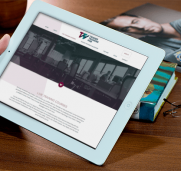
App Design Trends to Follow in 2020
Mobile apps are ingrained in our daily lives – we use them to get information, record data, or perform tasks. Smartphone users will use certain apps daily, and their expectations are higher than ever.
There is no magic formula for designing a successful app. App design trends come from the way people using them, and either sticking with or discarding what they use – so we have a put together a list of characteristics that are prevalent in all of the most successful apps out there.
“What’s in it for me?”
Make sure that whatever app you have in mind has real purpose. You don’t want to spend time and money on an app that will only be downloaded one time by your frineds and family, tried out, then never used again. Really consider what is going to make this worthwhile and helpful and do your research. Where possible, ask people in your target audience to give you their thoughts on what would make them use your app regularly.
Simplicity
There is that cliché saying “Keep It Simple, Stupid” or KISS! So often overlooked though! This is one of the most important design principles there is, irrespective of what you are designing. A good design is as simple as it can possibly be, it doesn’t overcomplicate things, or make the experience more difficult than it needs to be.
When it comes to a mobile app, keeping things as simple as possible ensures that new users will be able to get to grips with your app as quickly as possible.
Before you add any new features or navigation elements to your app, you should first ask yourself whether they are truly necessary. If you aren’t sure, then that implies the answer is probably no. Remember, every feature, button, or other elements that you add to your app without a clear purpose is taking up space needlessly and is only going to make things more confusing than they need to be for your users.
By making it easy for your users to focus on the key features of your app, you will improve the retention rate and ensure that your users are having the best possible experience with your app.
Make sure your app is responsive
No one enjoys using an app that is slow and sluggish. A slow app doesn’t just lead to a poor user experience, but it also reflects poorly on your business as a whole. As your app becomes bigger, it is easy for inefficiencies to creep in if you aren’t taking active steps to keep things running smoothly. Maintaining responsiveness ensures that your UI performs properly and your users are able to navigate your app easily.
There is an almost endless number of different mobile devices out there. Whether you release your app on iOS or Android, the number of devices that will be able to run your app is staggering. Ensuring that users have a consistent experience across different devices, regardless of their individual setup, is important.
Design your icons carefully
Most smartphone owners will use their phones every day. They might only be using the same narrow range of apps on most days, but this will breed a sense of familiarity. There are certain icons and symbols that users are used to seeing used in the same way throughout a number of different apps. For example, whenever most of us see a button with an ‘X’ in it, we assume that we use that button to close something.
Using familiar icons and symbols is another measure that aids navigation and adds to the user experience for your app. It is much easier to rely on icons that your users are likely already familiar with than trying to come up with your own. Where there aren’t any existing icons for you to call upon, think carefully about how you proceed. The most obvious solution is to create a button that has its name or function printed on it, making it immediately obvious what it does. However, this won’t always be an option and you might have to get creative with your solutions.
Whatever solution you settle on when designing your icons, make sure that you test your icon choices with users who are unfamiliar with your app. You want to be sure that anyone using your app is going to be able to work out what your icons do with ease.
Make marketing part of your development strategy
Having a solid app marketing strategy is essential if you want to have a successful launch. In fact, it doesn’t matter how well designed and developed your app is if no one knows that it exists. Professional app developers for hire, such as the Australian app development business Appetiser will often help their clients to develop marketing strategies, as well as developing the apps themselves.
By planning your marketing strategy while you are planning the rest of your app’s development, you can ensure that you hit the ground running and start thinking about how you can make your app part of its own marketing. For example, you could enable your users to share their activity on the app via social media, thereby spreading the word and encouraging more people to download the app.
The world of app design is a fast-moving one, and new trends are born and die all the time. However, the trends that we have outlined above have so far been pretty evergreen and aren’t showing any signs of going away soon. If you want your app to achieve its full potential then these are the elements you need to focus on.
[Photo by Cristian Dina from Pexels]


